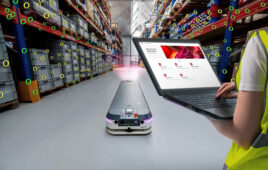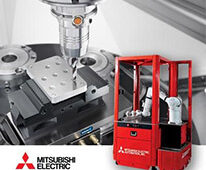Several years ago Henry was
the maintenance manager at a large manufacturing facility.
He
was married, had a very upbeat personality, a good position at the company, and
was pleasant to be around. One day, Henry was trying to track down a low
voltage problem and was conducting voltage measurements on a 4,160V to 480V dry
type transformer on an upper level mezzanine. He took off the transformer
cover, knelt down in front of it with a meter to test the 480V side and got the
4,160V side by mistake. The resulting arc flash explosion sent a fireball
blasting out of the cabinet catching him in the torso and groin before rolling
up his face.

With
his clothes burning, Henry managed to make it down the ladder. Coworkers put
out the fire and rushed him to hospital where he was diagnosed with third
degree burns over a large portion of his body. He lingered in the hospital for
an agonizing seven days and then died.
“From
that moment, the way I viewed electrical power changed forever,” says Jim
Phillips, who was called in to conduct the forensic investigation the next day.
Today Jim is one of America’s foremost experts on Arc Flash and teaches
numerous seminars on electrical safety through his company T2G Technical Training Group and has written a book on
the subject that will be published in the fall. “If you work in this business long enough, you
either know an arc flash victim or you know someone that knows a victim.”
According
to a report compiled by Capelli-Schellpfeffer, Inc., five to 10 arc flash
explosions happen in the USA every day, resulting in 1 to 2 deaths. Moreover, over the course of a seven-year study
tracking electrical accidents conducted by the U.S. Department of Labor’s
Bureau of Labor Statistics, 2,576 U.S. workers died and another 32,807 were
injured — losing an average of 13 days away from work — due to electrical
shock or burn injuries. A second study involving more than 120,000 employees
determined arc flash injuries accounted for 77% of all recorded electrical
injuries.
What
is Arc Flash?
As defined by IEEE and the
National Fire Prevention Association (NFPA), an Arc Flash is a strong electric
current — and often a full-blown explosion — that passes through air when
insulation between electrified conductors is no longer sufficient to contain
the voltage within them. This creates a “short cut” that allows
electricity to race from conductor-to-conductor… to the extreme detriment of
any worker standing nearby.
Arc Flash resembles a
lightning bolt-like charge, emitting extreme heat — up to 35,000 degrees
Fahrenheit or four times the surface temperature of the sun. Anyone exposed to
the blast or heat without sufficient personal protective equipment (PPE) would
be severely — and often fatally — injured.
Arc
Flash incidents cause several types of injury. Like Henry, victims may be
burned. They may also be thrown by the force of the explosion sustaining impact
injuries such as concussions and fractures, and/or deafened by the bang, which
can reach 160 decibels — louder than a jet engine. The extreme heat of the
explosion may also melt and shatter metal wiring and equipment and spray it
across the room as projectiles, causing shrapnel wounds, burns and igniting
clothing.
According
to most studies, the most common cause of these accidents is human error.
Henry’s tragic mistake in measuring the wrong side of the cabinet is a case in
point. But many other factors may trigger an incident. In some cases just
coming too close to a high-current source with a conductive object can cause
the electricity to flash over. Other causal factors include equipment failure
due to use of substandard parts, improper installation, or even normal wear and
tear, breaks or gaps in insulation or dust, corrosion or other impurities on
the surface of the conductor.
“It’s practically impossible
to completely eliminate arc flash incidents,” says Greg Richards, an automation
consultant with Siemens Energy & Automation. “The best way to avoid an Arc
Flash incident is to avoid working on energized equipment, but that’s not
always realistic,” adds Richards. “If you are in a continuous process
environment or a facility like an Air Traffic Control tower then you may just
have to deal with it.”
“However, there are a
number of ways you can significantly reduce the risk, starting with
understanding how dangerous these incidents can be, performing all the proper
groundwork as outlined by IEEE and NFPA regulations (see NFPA 70E “Standard for
Electrical Safety in the Workplace” and IEEE 1584 “IEEE Guide for
Performing Arc Flash Calculations”) and making sure that when you do work
on live equipment you have the appropriate PPE on at all times.”
Using TIA to reduce Arc
Flash risk
Richards has his own Arc
Flash horror story. Prior to joining Siemens he worked in a plant where a
worker got seriously hurt checking the voltage on a circuit to make sure it had
enough power to drive another piece of equipment. “He had second and third
degree burns from the waist up. He was in the hospital for nearly a year and
needed multiple skin grafts.”
This incident led to the
creation of an Arc Flash task force for the company’s five North American
plants. “We started with making sure we had the right PPE, but then we went
looking for ways to eliminate Arc Flashes altogether.”
Eventually Richards
realized that reducing the need to open the cabinet in the first place was one
of the best ways to accomplish that goal. “People open the cabinet for many
reasons, but chief amongst them is that, typically, they don’t know what’s
going on inside,” he says. “They know there’s a problem; they are getting an
alarm or a circuit has tripped or something. But they don’t know exactly what.
What if we can get that information without opening the cabinet?”
By integrating all the
relevant equipment, such as the motors, drives and switchgear, with the
communications network in what Siemens calls a Totally Integrated Automation
(TIA) architecture, operators are able to monitor and pull diagnostic
information, perform trend and root cause analysis and generally better see
what the problems are before sending an electrician into the plant to deal with
a problem. Over time Richards found that workers were going into the electrical
cabinet less and less often.
“As we used it more, the
guys learned to trust the information they were getting,” Richards said. “If a
breaker tripped, they knew it. But, before the TIA system, there was nothing to
do but reset the breaker. The TIA diagnostics allowed engineers to go back and
trend the data–to perform and process the diagnostics externally. For example,
if I wanted to know what the drive current was, I could just look that up. As a
result, we found that, over time, people were going into the cabinet less and
less.”
Phillips agrees that the
TIA approach is solid. “If there are ways to monitor and control things that
keep people from opening the cabinet then that’s a much better way. The best
option is always to avoid the hazard. Doing this through automation and control
is a great approach.”
“Having
access to this data does not stop arc flash,” cautions Richards. “The number
one thing you can do to avoid that is to coordinate your power system and
reduce your exposure to a potential incident. And the more you integrate, the
less likely you are to have to open the cabinet in the first place.”
Arc
Flash Resources:
Many free articles
and downloads – www.brainfiller.com
A global community about arc flash and electrical safety – www.ArcFlashForum.com
Siemens Arc Flash brochure
Siemens Arc Flash
studies
Video
of Arc Flash accident
::Design World::
Filed Under: Factory automation, INDUSTRIAL SAFETY SYSTEMS





Tell Us What You Think!